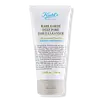What's inside
What's inside
 Key Ingredients
Key Ingredients

 Benefits
Benefits

 Concerns
Concerns

 Ingredients Side-by-side
Ingredients Side-by-side

Water
Skin ConditioningKaolin
AbrasiveGlycerin
HumectantAlcohol Denat.
AntimicrobialSodium Cocoyl Glycinate
CleansingCoco-Betaine
CleansingAcrylates Copolymer
Sodium Chloride
MaskingCI 77891
Cosmetic ColorantSolum Diatomeae
AbrasivePhenoxyethanol
PreservativePEG-14m
Emulsion StabilisingGlycol Distearate
EmollientSodium Benzoate
MaskingAloe Barbadensis Leaf Juice
Skin ConditioningSalicylic Acid
MaskingAvena Sativa Kernel Flour
AbrasiveTocopherol
AntioxidantSodium Hydroxide
BufferingAllantoin
Skin ConditioningWater, Kaolin, Glycerin, Alcohol Denat., Sodium Cocoyl Glycinate, Coco-Betaine, Acrylates Copolymer, Sodium Chloride, CI 77891, Solum Diatomeae, Phenoxyethanol, PEG-14m, Glycol Distearate, Sodium Benzoate, Aloe Barbadensis Leaf Juice, Salicylic Acid, Avena Sativa Kernel Flour, Tocopherol, Sodium Hydroxide, Allantoin
Water
Skin ConditioningSodium C14-16 Olefin Sulfonate
CleansingMagnesium Aluminum Silicate
AbsorbentSodium Cocoamphoacetate
CleansingCetearyl Alcohol
EmollientGlyceryl Stearate
EmollientGlycerin
HumectantCharcoal Powder
AbrasivePropanediol
SolventKaolin
AbrasiveCarbon
Eucalyptus Globulus Leaf Powder
AbrasiveMentha Piperita Oil
MaskingGlycyrrhiza Glabra Root Extract
BleachingNigella Sativa Seed Extract
PerfumingEthylhexylglycerin
Skin ConditioningSodium Chloride
MaskingGlyceryl Polyacrylate
Cocamidopropyl Hydroxysultaine
CleansingXanthan Gum
EmulsifyingCaprylyl Glycol
EmollientLactic Acid
BufferingGlycolic Acid
BufferingParfum
MaskingLinalool
PerfumingBenzyl Benzoate
AntimicrobialPhenoxyethanol
PreservativeCI 77891
Cosmetic ColorantWater, Sodium C14-16 Olefin Sulfonate, Magnesium Aluminum Silicate, Sodium Cocoamphoacetate, Cetearyl Alcohol, Glyceryl Stearate, Glycerin, Charcoal Powder, Propanediol, Kaolin, Carbon, Eucalyptus Globulus Leaf Powder, Mentha Piperita Oil, Glycyrrhiza Glabra Root Extract, Nigella Sativa Seed Extract, Ethylhexylglycerin, Sodium Chloride, Glyceryl Polyacrylate, Cocamidopropyl Hydroxysultaine, Xanthan Gum, Caprylyl Glycol, Lactic Acid, Glycolic Acid, Parfum, Linalool, Benzyl Benzoate, Phenoxyethanol, CI 77891
 Reviews
Reviews

Ingredients Explained
These ingredients are found in both products.
Ingredients higher up in an ingredient list are typically present in a larger amount.
Ci 77891 is a white pigment from Titanium dioxide. It is naturally found in minerals such as rutile and ilmenite.
It's main function is to add a white color to cosmetics. It can also be mixed with other colors to create different shades.
Ci 77891 is commonly found in sunscreens due to its ability to block UV rays.
Learn more about CI 77891Glycerin is already naturally found in your skin. It helps moisturize and protect your skin.
A study from 2016 found glycerin to be more effective as a humectant than AHAs and hyaluronic acid.
As a humectant, it helps the skin stay hydrated by pulling moisture to your skin. The low molecular weight of glycerin allows it to pull moisture into the deeper layers of your skin.
Hydrated skin improves your skin barrier; Your skin barrier helps protect against irritants and bacteria.
Glycerin has also been found to have antimicrobial and antiviral properties. Due to these properties, glycerin is often used in wound and burn treatments.
In cosmetics, glycerin is usually derived from plants such as soybean or palm. However, it can also be sourced from animals, such as tallow or animal fat.
This ingredient is organic, colorless, odorless, and non-toxic.
Glycerin is the name for this ingredient in American English. British English uses Glycerol/Glycerine.
Learn more about GlycerinKaolin is a clay. It is used for oil control and to help minimize pores. Like other clays, kaolin has the ability to absorb excess sebum or oil. This can help clean out pores and mattify the skin.
Some types of kaolin may have exfoliating properties. When water is added to kaolin, it becomes a paste with small abrasive particles.
Most kaolin is a white color, but may be pink/orange/red depending on where it comes from.
The name 'kaolin' comes from a Chinese village named 'Gaoling'. Kaolin clay comes from rocks rich in kaolinite. Kaolinite, the mineral, has a silicate layered structure. Kaolinite is formed from chemical weathering of aluminum siilicate minerals.
Besides skincare, kaolin is commonly used to make glossy paper, in ceramics, toothpaste, and as medicine to soothe stomach issues.
Learn more about KaolinPhenoxyethanol is a preservative that has germicide, antimicrobial, and aromatic properties. Studies show that phenoxyethanol can prevent microbial growth. By itself, it has a scent that is similar to that of a rose.
It's often used in formulations along with Caprylyl Glycol to preserve the shelf life of products.
Chances are, you eat sodium chloride every day. Sodium Chloride is also known as table salt.
This ingredient has many purposes in skincare: thickener, emulsifier, and exfoliator.
You'll most likely find this ingredient in cleansers where it is used to create a gel-like texture. As an emulsifier, it also prevents ingredients from separating.
There is much debate on whether this ingredient is comedogenic. The short answer - comedogenic ratings don't tell the whole story. Learn more about comegodenic ratings here.
The concensus about this ingredient causing acne seems to be divided. Research is needed to understand if this ingredient does cause acne.
Scrubs may use salt as the primary exfoliating ingredient.
Learn more about Sodium ChlorideWater. It's the most common cosmetic ingredient of all. You'll usually see it at the top of ingredient lists, meaning that it makes up the largest part of the product.
So why is it so popular? Water most often acts as a solvent - this means that it helps dissolve other ingredients into the formulation.
You'll also recognize water as that liquid we all need to stay alive. If you see this, drink a glass of water. Stay hydrated!
Learn more about Water